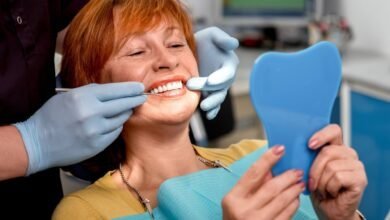Differences Between Acupuncture and Dry Needling Therapy

Most people dread the word “needle” but it might be worth giving it a try when a needle is used for therapeutic reasons. While you may be familiar with traditional needle therapy or acupuncture, which has been in practice for thousands of years, dry needling is relatively new. If you are feeling pain, discomfort, or suffering from other issues like anxiety or depression, acupuncture may be a reliable technique.
Dry needling is a growing practice nowadays and addresses muscular pain. It is usually administered by physiotherapists and sports injury therapists with appropriate training. Although needles are used for both treatments, the methods differ to a great extent in terms of goals, the method of administration, and applications. If you compare acupuncture and dry needling, you feel that both are the same as they include administering needles to relieve pain. That is all. While acupuncture is a traditional and old method of treating pain, dry needling is relatively new. Before you get IMS treatment & dry needling therapy in Kelowna, you need to sort out the differences between both.
Here is an exploration of both techniques that delve into the differences between acupuncture and dry needling therapy:
What is Dry Needling?
Dry needling is a therapeutic technique in which thin needles are inserted into the trigger points of pain like tendons, muscles, or connective tissues. In this process, experts administer local anesthetics or corticosteroids as opposed to wet needling therapies. Usually, this treatment option targets area of the body that experiences muscle tightness, pain and restricted movement. It is sometimes also called intramuscular stimulation and is applied to hard and knotted muscles. With the help of the needles, the knot is released and muscle pain is reduced. However, the needles remain in the skin for some time and are removed only after some time. Dry needling and IMS in Kelowna is administered to make tight muscles and enable free and painless movement.
Characteristics of Dry Needling:
The features of dry needling therapy are:
- The technique of dry needling helps in relieving musculoskeletal pain, chronic pain conditions, sports-related injuries, and headaches that occur due to stress. Typically, it addresses the issues under the muscles and promotes the natural healing process of the body.
- Needle insertion in this technique is not invasive and targets only the upper layers of the muscles and connective tissues.
- Dry needling releases tension in the trigger points, enabling pain reduction. The needles are inserted into these points directly and result in a twitch response thereby releasing tension.
If you are seeking physiotherapy in Kelowna, dry needling makes the exercises more effortless and free-flowing. You are expected to become fitter and better quickly when you go for an IMS session before going in for physiotherapy.
Risks of Dry Needling:
With dry needling, the side effects are only mild. Here they are:
- The commonest effect is mild bleeding, soreness that lasts only temporarily, and a little bit of bruising.
- If you have pre-existing conditions like cancer, infection, or a weak immune system, the body may not generate a positive response to this treatment technique.
- Those who are on blood thinning medicines are recommended to avoid dry needling therapy as it may enhance the chances of bruising.
Things to Know about Scupuncture:
In acupuncture, the needles used are thin and long as they are used for deeper penetration to stimulate the muscles under the skin. The technique can be used for relieving a variety of health conditions like nausea, muscle pain, knee pain, migraines, and headaches, as well as depression. The person practicing acupuncture needs to undergo training for three or more years to identify the symptoms of the pain and apply the correct techniques.
Features of Acupuncture:
The major features of this treatment therapy are:
- The benefits of acupuncture target beyond the musculoskeletal issues and target the overall health and wellness.
- The needles are to be inserted deeply to allow them to access deeper structures.
- Acupuncture not only targets physical wellness but also promotes emotional and mental well-being.
Wondering which treatment option is right for you? A lot depends on your health and personal preferences. If you have muscle tightness and pain, dry needling is the priority and is fast becoming a potent choice in Kelowna’s healthy and wellness schedule. On the other hand, if you want relief from symptoms of allergy, mental illness, and physical pain, acupuncture is the right choice. Both the treatment options have their risks and benefits.
Understanding the differences between these needling techniques helps individuals make informed choices based on their health goals and requirements. Are you seeking targeted relief for muscular issues through dry needling near me or need a holistic approach to well-being with acupuncture or traditional needle technique? The key lies in identifying the unique features that each technique brings to the realm of therapeutic interventions.
- Related Post: Why Chocolate is Off the Menu After Hiatal Hernia Surgery?
- Related Post: 10 Best Ways to Prevent Poor Food Safety




